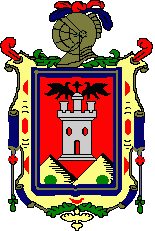Quito history
The history of this beautiful colonial city, full of legends woven over more than 400 years, is still alive in the memory of its inhabitants. To find its origin it is necessary to go back in time to the 6th of December in 1534, when the Spanish conquistadors founded the city with 204 settlers. Before then, the present-day site of Quito was inhabited by the Quitus, a tribe from the Quechua civilization in a strip of land that stretched from what is now Cerro del Panecillo in the south to Plaza de San Blas in the center. Called the Kingdom of Quito in the Pre-Hispanic period, buildings in this ancient city were made of carved stone and sun-dried brick. Later, Spanish architects incorporated the same materials into their grandiose constructions. At the beginning of the 16th century, the city adopted a monumental style with the construction, by the various Catholic missions, of the impressive temples of San Francisco, Santo Domingo, La Catedral and San Agustin. The main events during this period took place in or around these temples, which helped promote religiousness among the people.
The truth is that Quito history starts long before 1534, date of the Spanish foundation. Although pre-Hispanic traces disappeared with the conquistadors' arrival, it has been said that before the Europeans arrived, Rumiñahui, an indigenous warrior, set the city on fire and destroyed the temples of the Incas who lived there. Other legends tell of such characters as Atahualpa, last emperor of Tahuauntinsuyo, the Inca Kingdom, who was executed in 1533 by his Spanish captors, despite the fact that the Inca people paid a whole room full of gold and silver for his return. Figuring large in more recent tales is Xavier Chusig, a crossbreed (someone of mixed Indian and Spanish parentage) who changed his name to Eugenio de Santa Cruz y Espejo to avoid discrimination and went on the found the first newspaper in the city. There are still other stories of Manuela Saenz, the first woman to join the Bolivarian army and who became the chief lieutenant of "the Liberator" Simon Bolivar.
For them, as for many others, Quito was the setting of their resistance and struggle. The conquest brought many Catholic missions, whose presence is apparent in the more than thirty convents, churches and chapels in the historic center. Their influence was not in vain, and religious devotion was sown in people's souls. In 1649, more than two thousand people crossed the city from north to south various times during the day and night, praying for God to reveal to them the identity of the thieves who had stolen the sacred chalice from the convent of Santa Clara. The 28th of January, 1912 was especially memorable in the annals of the city's history. A large crowd of people dragged the dead body of President Eloy Alfaro through the streets. Alfaro had headed the Liberal Revolution but was assassinated in the city's prison and later incinerated at El Ejido park. Another important event was the coup d'état attempt on September 1, 1975, when the army attacked the Presidential House during the government of General Guillermo Rodriguez Lara.
On a happier note, three years later, Quito was declared Cultural Heritage of Humanity by UNESCO with the aim of preserving its colonial convents and churches and the historic center in general. The city expansion towards the north and the south started during the 1980's, when the main tourist area in the north-central area of modern Quito started growing. Quito, capital city of the Republic of Ecuador, is today an enterprising metropolis and political center of the country. It has made an enormous effort to offset the damage caused by the natural disasters that have affected it over the years. Quito offers many options for a pleasant visit amidst its history, tradition and legend.

